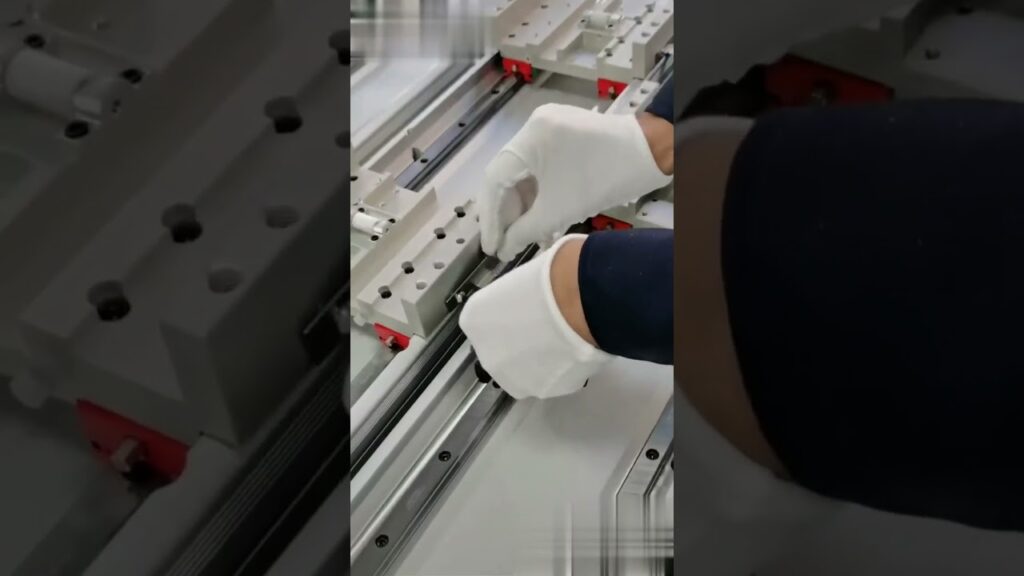Single-axis robots have revolutionized the industrial sector with their ability to operate along a single axis, typically in a linear motion. These robots have found wide applications across various industries, making them a crucial component in modern manufacturing processes. In this article, we will explore the different types of industrial robots and delve into the fascinating world of single-axis robots.
Types of Industrial Robots:
Industrial robots are designed to automate labor-intensive tasks in manufacturing and production facilities. These machines are programmed to perform repetitive tasks with precision and efficiency, ultimately enhancing productivity and reducing costs. Let's take a closer look at some common types of industrial robots:
1. Articulated Robots:
Articulated robots are known for their high flexibility and versatility. They consist of multiple rotary joints connected by arms, mimicking the movements of a human arm. These robots excel in applications that involve precise and complex movements such as welding, painting, and assembly.
2. Cartesian Robots:
Cartesian robots, also known as gantry or rectilinear robots, operate along three linear axes, allowing for precise and controlled movements in the X, Y, and Z directions. These robots are commonly used in pick-and-place operations, material handling, and packaging.
3. SCARA Robots:
SCARA robots, which stands for Selective Compliance Assembly Robot Arm, are widely used in assembly and material handling processes. With their articulated Z-axis, these robots can efficiently perform tasks that require horizontal movements, such as screwdriving, inserting pins, and assembling components.
4. Delta Robots:
Delta robots are characterized by their parallel structure, typically with three arms connected to a common point. They are particularly suitable for high-speed pick-and-place operations, packaging, and sorting in industries like food and beverage, pharmaceuticals, and electronics.
5. Collaborative Robots:
Collaborative robots, or cobots, are designed to work alongside humans, enhancing productivity and safety in shared workspaces. These robots incorporate advanced sensors and safety features that enable them to react and adapt to human presence. Cobots have gained popularity in various applications, including assembly, material handling, and quality control.
Build and Sell Single Axis Robot:
Amongst these various types of industrial robots, single-axis robots have garnered significant attention for their simplicity, efficiency, and cost-effectiveness. Let's explore the benefits and applications of single-axis robots:
1. Simplicity and Ease of Use:
Single-axis robots excel in applications that require simple linear movements. Their straightforward design makes them easy to operate and maintain, reducing training costs and increasing ease of integration into existing production lines.
2. Cost-Effective Solution:
Compared to more complex robots, single-axis robots are often a more cost-effective solution for specific tasks. Their simplified structure and reduced number of moving parts not only lower the initial investment but also result in lower maintenance and operational costs.
3. High Precision and Accuracy:
Single-axis robots are known for their high repeatability and precision. These robots can consistently perform tasks with minimal deviation, ensuring product quality and reducing waste in manufacturing processes.
4. Wide Range of Applications:
Single-axis robots find applications in various industries, including electronics, automotive, pharmaceuticals, and consumer goods. They are commonly used for tasks such as sorting, packaging, labeling, and parts assembly.
The Future of Industrial Robotics:
As technology continues to advance at a rapid pace, we can expect significant developments in the field of industrial robotics. Here are some predictions for the future of industrial robotics:
1. Increased Collaboration:
Collaborative robots will play a more prominent role in manufacturing, working closely with humans to enhance productivity and safety. Advancements in sensor technology and artificial intelligence will further improve the ability of robots to interact and cooperate with humans.
2. Enhanced Mobility:
Mobile robots will become more prevalent, allowing for greater flexibility and adaptability in industrial environments. These robots will be equipped with advanced navigation and obstacle-avoidance systems, enabling them to navigate complex spaces independently.
3. Integration of AI and Machine Learning:
Artificial intelligence and machine learning algorithms will be integrated into industrial robots, enabling them to learn and adapt to changing environments. This will result in increased autonomy and the ability to handle more complex tasks with minimal human intervention.
4. Advanced Vision Systems:
Vision systems will become more sophisticated, enabling robots to recognize and interact with objects and environments more efficiently. This will enhance their capabilities in tasks such as quality control, inspection, and object recognition.
In conclusion, industrial robots, including single-axis robots, have revolutionized the manufacturing industry by automating labor-intensive tasks and improving productivity. The different types of industrial robots each have their unique features and applications, catering to a wide range of manufacturing needs. As we look towards the future, advancements in technology will undoubtedly continue to transform the landscape of industrial robotics, paving the way for even more efficient and intelligent machines.
Industrial Robot
"Unlocking Efficiency: Learn About Single Axis Robots and Types of Industrial Robots for Your Business"


